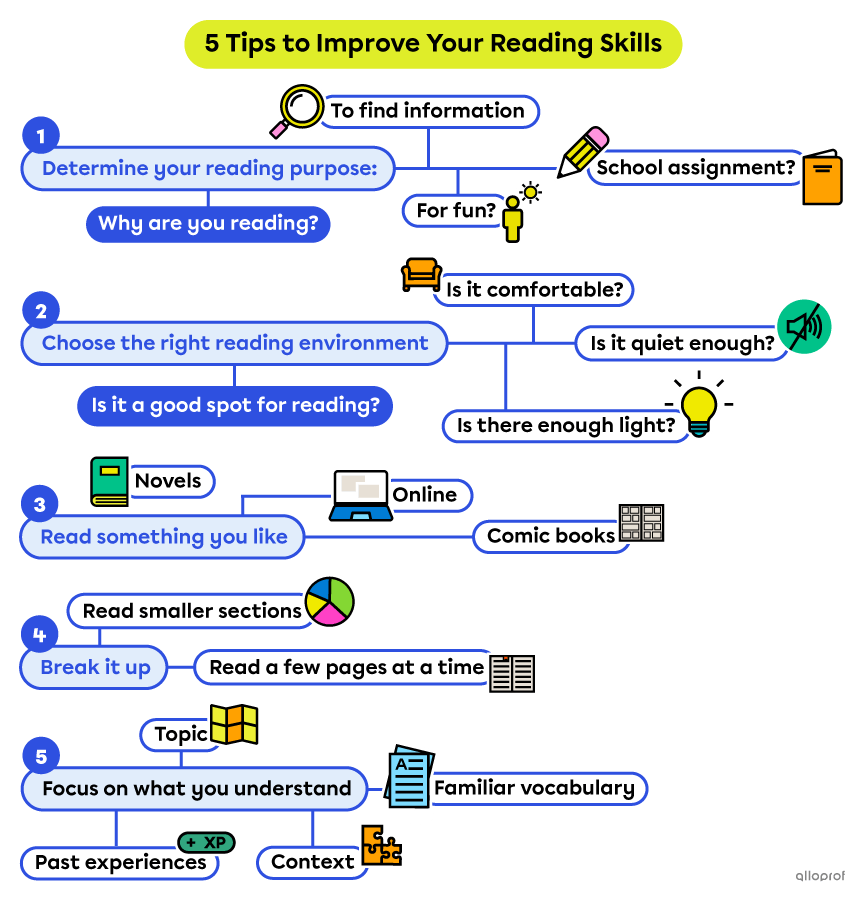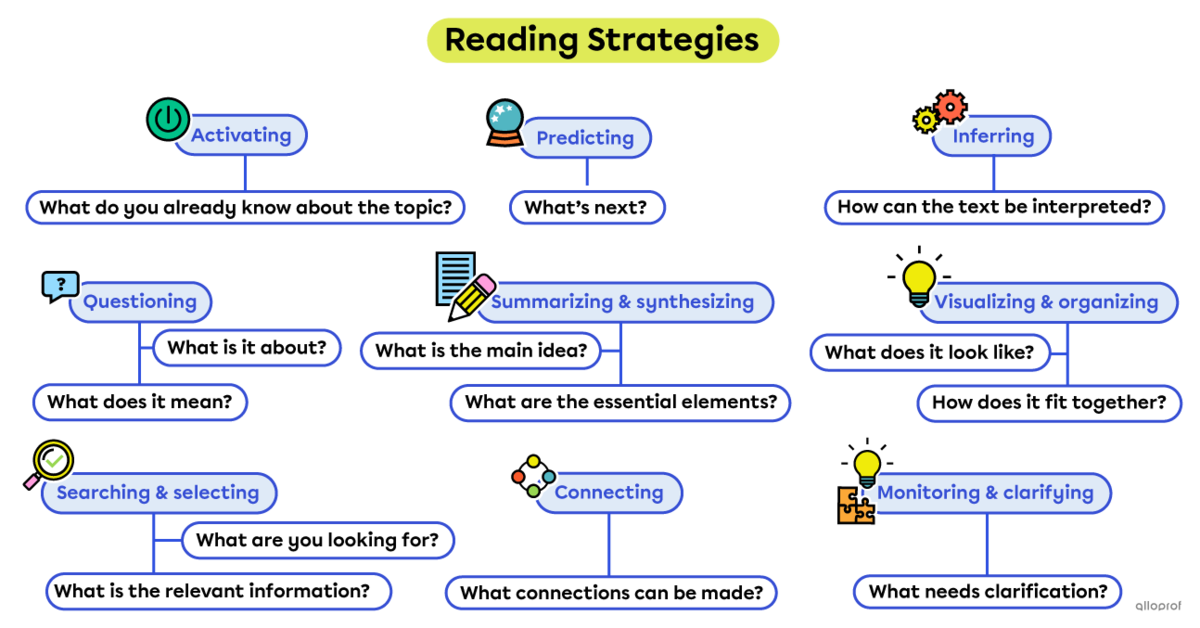Reading can sometimes be challenging.
Here are 5 tips to help your motivation:
-
Determine your reading purpose.
-
Choose the right reading environment.
-
Read something you like.
-
Break it up.
-
Focus on what you understand.

Using reading strategies helps readers find meaning in the text and improve their reading skills.
The main reading strategies are:

|
Meaning |
How to use it |
|
Using what you already know about the topic. Any past experiences and knowledge that could help you understand the text by making connections. |
|
|
Meaning |
How to use it |
|
Using clues in the text to figure out what will come next. |
Anticipate the logical next step in a text by looking at the context. |
|
Meaning |
How to use it |
|
Finding out what the text’s implied meaning is: reading between the lines. |
|
|
Meaning |
Questions to ask |
|
Asking questions about the text |
|
|
Meaning |
How to use it |
|
Saying what a text is about in a few sentences, in your own words. |
|
|
Meaning |
Ways to do it |
|
Making a mental picture and arranging elements in meaningful order. |
|
|
Meaning |
Ways to do it |
|
Looking for and choosing the right information in the text. |
|
|
Meaning |
Ways to do it |
|
Making connections with the text. |
|
|
Meaning |
Ways to do it |
|
Identifying what is not understood and trying to figure it out. |
|
|
Meaning |
How to do it |
|
Getting a general idea of the text by giving it a quick look. |
|
Skimming advantages
-
It’s fast.
-
It quickly provides the main idea of a text.
Skimming disadvantages
-
It gives minimal information.
-
It gives no details.
-
Important information can be overlooked.
|
Meaning |
How to do it |
|
Looking for specific information without reading the whole text. |
|
Scanning advantages
-
Specific information can be found quickly.
-
Can point the reader to the right place in a text.
Scanning disadvantages
-
Only focuses on details.
-
General text meaning will be missing.
|
Meaning |
How to do it |
|
Reading audibly. |
Read the text with your voice so that it can be heard. |
Reading out loud advantages
-
Can help understand certain words.
-
Practise pronunciation.
Reading out loud disadvantages
-
Can be disturbing to people around you.
-
Slows down reading speed.
|
Taking notes advantages: |
Taking notes disadvantages: |
|
Slows down the reading process. |
|
Meaning |
How to do it |
|
Writing down interesting and important elements. |
Note down important elements. |
Taking notes advantages
-
Helps organize information.
-
Makes it easier to remember.
Taking notes disadvantages
-
Slows down the reading process.
|
Meaning |
How to do it |
|
A series of steps used to help understand a text. |
|
|
Meaning |
How to do it |
|
A visual organizer for narrative text elements |
Organize story elements. |
Visit the Plot Diagram concept sheet to find out more.